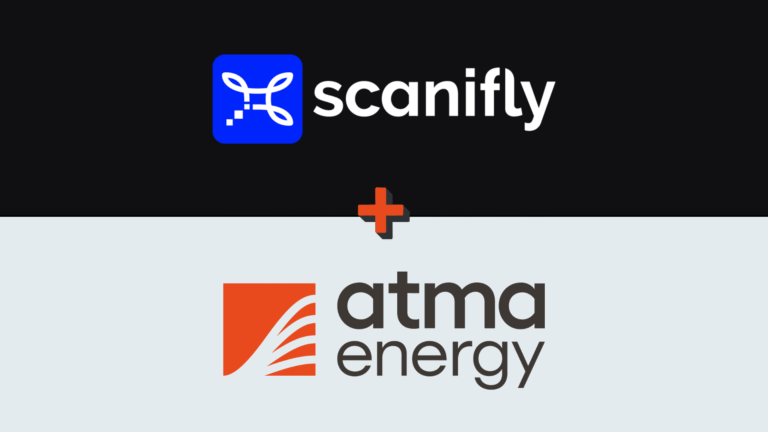Key takeaway: As long as Site Surveyors, Installers, and other Field Techs are climbing on roofs, Contractors need to worry about liabilities like insurance costs, worker’s compensation fees, the risk of lawsuits, and the potential for reputational damage if an accident occurs. At the same time, there’s often pressure to get the job done and Surveyors often have to balance safety decisions with moving fast and being a good team member. Thankfully, new technologies like drones with mobile apps can reduce risks and financial liabilities while driving business growth.
Despite nasty snow that kept most people off the roads, Mark (not his real name) got in his company car, drove to the site, and climbed on the roof to conduct a site survey. He nearly slipped twice—with the worried homeowner watching closely—but it was nearly year-end, and his team was counting on him.
He kept pulling tape until his HR leader, Marie (not her real name), called and explicitly told him to stop, get home safely, and that she would handle any blowback he faced for not finishing the job that day.
Marie cared for Mark’s safety; she was also aware of company liability structure. If anything happened to Mark, it could skyrocket insurance premiums, trigger lawsuits, and irreparably harm the company’s reputation in the eyes of both talent and customers; Marie experienced this at a previous Solar Contractor, so she knew it was a real risk.
While this story took place in extreme cold, the reality is that the same thing can happen in any weather: heat, rain, wind, cold, overly bright sunlight, or even a perfectly regular day.
Whatever your climate, any roof time is a liability and safety risk. And protections like waivers and insurance policies do not solve the problem—one accident can end everything.
Yet, in many cases going on the roof before install day needs to happen. For example, older homes without attic access need to have a structural test done. Some homes with poor imagery need to conduct a shingle bend test. And in some cases, there isn’t a good way to check for soft spots around the roof.
That said, now there is technology to minimize or nearly eliminate a roof climb until install day. If a contractor can level up their safety efforts without compromising scale, efficiency, or their P&L, that is something they should closely consider. Here are the implications if they don’t.
The Risks and Liabilities of Surveyors on Roofs
With every employee on a roof, Contractors gamble with the following risks:
Direct financial costs: High insurance premiums and worker’s compensation fees, as Surveyors are classified as high-risk workers.
Health and worker capacity risks: Solar Surveyors are at risk for all of OSHA’s top four hazards—falls, caught-in or -between, struck-by, and electrocution. But even without accidents, extreme heat or bodily wear-and-tear can cause injury or death.
“Filling out life insurance forms was a psychologically interesting experience for me as a Solar Surveyor,” said Mark. “I realized I might actually need this; I might actually need to claim it because I could be seriously injured at work.”
Company culture risks: For companies, an employee getting hurt means insurance issues, risks of lawsuits, and a blow to the company’s ability to hire or retain talent.
“[One accident] feeds into not only the retention of that particular employee, but it has a reverberating effect on the overall company culture of other people saying, ‘Do I have longevity in this role and in this company? Does this company care about my—or my family’s—best interests?’” said Marie.
Sales and reputational risk: Mark said property owners worried for his safety every time he climbed on a roof, even in “safe” conditions. And with good reason—no one wants their home or office to be the place where someone got injured.
“I got that all the time—people were so nervous and worried I might fall off their roof,” said Mark. “Even customers who wanted their project done quickly were not thrilled. Homeowners also aren’t excited about a Surveyor harnessing in and putting holes in their roofs prior to construction.”
Legal ramifications: Insurance and waivers don’t protect from all legal ramifications. For example, an employee may still sue after an injury; if a court finds you negligent, you may still be held liable. But even without court cases, your company may become uninsurable after an accident.
A Technological Solution to Growth and Safety
Safety risks are often taken in the name of growth. But safety and growth do not need to be at odds. Here’s what Contractors can do to build a culture of safety that enables, rather than hinders, growth.
1. OSHA training
All employees should take OSHA safety training, which should be paid time and completed together. In addition to learning the ins and outs of safety, this is a great opportunity for your team to connect with one another, increasing cross-functional collaboration.
From there, all Surveyors should be encouraged to dress the part with safety vests, clean pants, and hard hats on all sites.
2. Lean on technology
Technology can help keep Surveyors off the roof and collect more accurate measurements. For example, mobile apps and drones can capture completely accurate, whole site context in 10-15 minutes with a Surveyor staying firmly on the ground.
Learning to use drones is fairly easy:
-
A few hours to learn the basics—just ask Freedom Solar and SunBug.
-
FAA Part 107 licensing takes less than a week.
-
Additional training through Scanifly Academy is completely free and self-paced.
Using drones can also save $7,000-$15,000+ per Surveyor, per year because worker reclassifications often mean significantly lower insurance and worker’s compensation premiums.

3. Host weekly safety meetings
Mark and Marie both recommend hosting weekly safety touch points—or adding a safety check-in to an existing meeting. During meetings, Mark said the conversation should focus on:
-
Any issues that arose on site in the past week.
-
What method(s) people took to solve the problem—or if they stopped work.
-
What other method(s) might have been more efficient or safer, if applicable.
Above all, though, Mark said it’s essential to focus on safety outcomes, not blame.
“It’s promoting open and honest communication,” said Mark. “It’s not to get people in trouble but to explain what may have been less safe—and how to do it better next time while still getting what the team needs.”
4. Make safety checks a standard pre-work task
Before you start any work, even just a quick drone-based survey, Mark said it’s essential to scope out the site for potential hazards.
He recommends looking for:
-
Electrical risks (e.g. lines on the roof)
-
Animals nearby (nests or actual animals)
-
Easiest ways to get on or near the roof, if you have to spot-check something on the roof that the drone can’t identify.
Properly documented, these notes can also help Installers stay safer down the line.
“If you can all get together and fill out a quick hazard analysis sheet before you actually get started, it continues a culture of safety within the company,” said Mark.
5. Empower employees to make safety-related calls
One of the best days in Mark’s career was when he joined a new team, and his manager gave all Surveyors stop-work authority for safety. Then his manager explained common reasons why you might stop work, for instance, damaged electrical wiring.
Marie said this kind of empowerment is essential to remove the pressure that Surveyors often face to choose between safety and productivity. However, she added it’s crucial for Surveyors to document why they stopped work—that way the team can either coach that Surveyor on how to safely navigate the problem or have backup evidence to communicate with site owners.
Finally, Marie said it’s essential to have insurance in place and have employees sign waivers as part of their employment agreement. However, this is an administrative step to protect everyone if the worst happens, not permission to ignore other steps.
Set Yourself Up for Success Now and in the Future
Safety stems from avoiding risk for the company and injury for employees. At the same time, Marie said it’s important to look at safety training as a growth mechanism—a safe team that is able to efficiently complete work with technology will get more done.
With the potential of Surveyors to be your best salespeople, owing to how much face time they have with customers, empowering them means empowering organizational growth.
“Invest in the training and the resources from the very beginning to not only make sure that your team is safer but also so you can retain employees and help you feel better about the product and service you’re providing to customers,” said Marie. “Tools—like OSHA training and Scanifly—are investments for your company and for your employees.”






